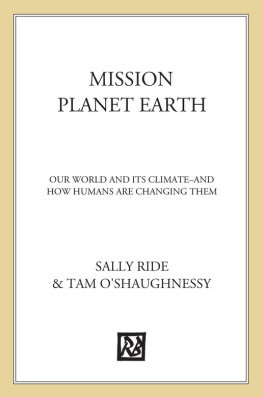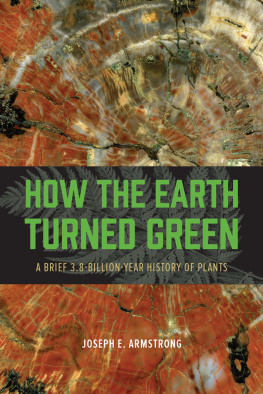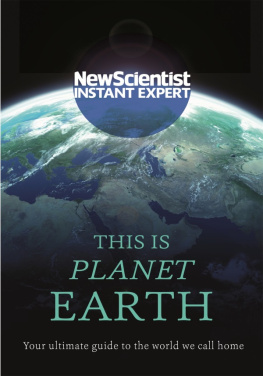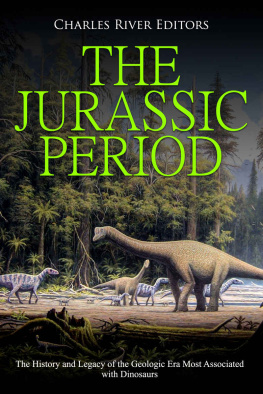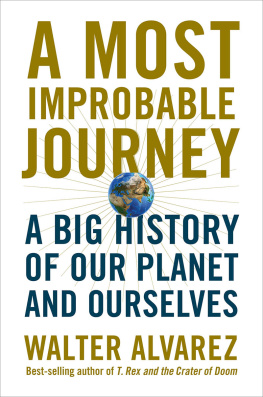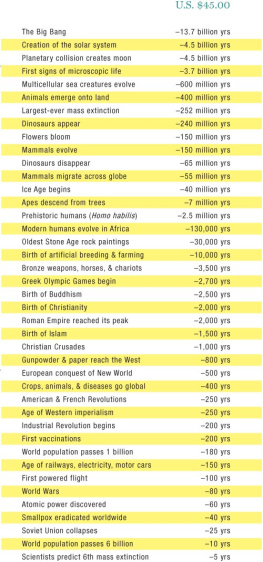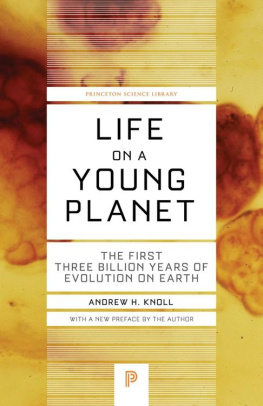Acknowledgements
THE TWO YEARS I have spent researching, writing and now editing this incredible story would have been entirely impossible were it not for the unwavering support of my wonderful wife and two daughters. A big thank you also to our dog, Flossie. It would have been quite impossible to work out where on earth to begin and end each chapter without our many countryside walks.
I have also greatly benefited from the generosity, enthusiasm and support of my parents, family and friends, for which I am eternally grateful. The publishing team at Bloomsbury has been a complete delight to work with at every stage of the project for both the illustrated hardback and now this abridged paperback. Their professionalism and expert guidance is second to none. In particular I would like to thank Richard Atkinson for his constant support, enthusiasm and determination at every stage of the conception, birth and ongoing delivery of the What on Earth? series of books. My sincere thanks also to Trm-Anh Doan for so skilfully navigating this paperback edition from first edit to final print.
Other thanks go to all those unknown trees that have been sacrificed in the course of telling this extraordinary tale. Theres a good 300 million years of evolutionary wizardry just in the paper between these covers.
Finally, I dedicate this book to the memories of two special people. Dodo, my grandmother, would have taken such a keen interest in this whole project. Also to Christo, my late great-uncle and namesake, whose enormous generosity and passionate interest in other people knew no bounds and still inspires me every day. May the spirit of Great Dixter live on!
Islamic Globalization
(5701450 AD)
How a series of visions appeared to a merchant from Mecca, connecting East with West
MOHAMMED WAS A PROPHET and the founder of Islam, a religion and way of life that has profoundly affected the course of human and natural history. About 1,400 years ago, this merchant from the city of Mecca was seized by a series of visions in which he saw the Archangel Gabriel reveal the true and final word of Allah, the one almighty God. His family and followers then wrote down these revelations in a series of verses called the Koran. Today, with more than 1.3 billion practising Muslims, Islam is the second most popular religion in the world, after Christianity (there are an estimated 2.1 billion Christians in the world today).
Before the emergence of Islam, the Arab religion was pantheistic. The Kaaba was a shrine in Mecca, in the middle of the Arabian desert, that contained 360 different gods. Every year nomadic tribes would converge on the Kaaba in the Hajj, a pilgrimage. No violence was allowed. It was believed that the Kaaba represented the intersection between heaven and earth. Its cornerstone, a piece of sacred black rock, symbolized that link, having fallen from the gate of heaven as a meteorite. It is still located in the Kaaba, a large cubic building in the al-Masjid al-Haram mosque in Mecca.
Mohammed was born in Mecca in about 570 AD. His family business was the transportation of goods such as salt, gold, ivory and slaves using horses and camels. As a youth he gained a reputation for honesty and wisdom. It is said he successfully resolved a heated dispute during the reconstruction of the Kaaba after it had been damaged by flash floods. The four chief clans of Mecca couldnt decide which of them should have the honour of lifting the sacred cornerstone into place. It was resolved to let the next person who walked into the shrine make the decision that person was Mohammed. Mirroring the wisdom of King Solomon, he took off his cloak, placed the stone in the middle and instructed the leaders of the clans to lift it into place jointly by taking one corner of the cloak each.
Mohammed was a profoundly unsettled man. Perhaps it was because he never knew his father, Abdullah, who died on a trading trip six months before he was born. Perhaps it was because he lost his mother, Amina, who died of an illness when he was only six. Maybe life as a merchant disillusioned him. Despite what was by all reports a happy marriage, at the age of about forty he withdrew from everyday life to a small cave on Mount Hira, near where he lived. There he had the first in a long series of dramatic and vivid visions in which the Archangel Gabriel the same angel who is said to have visited Abraham and Mary, Jesuss mother revealed to him the final and absolute word of God.
The angel told Mohammed that there was only one God, not many, and that he was in heaven, not on earth. He said that God had revealed his word many times before through prophets such as Adam, Abraham, Moses, Jacob, Joseph, Elijah, Jesus and more than fifty others, but that over time, partly by accident but sometimes through deception, humans had corrupted his word and leaped to false assumptions. In so doing they had constructed religions such as Judaism and Christianity, which, although based on the truth of there being only one God, had become misguided and false.
It was a mistake, said the angel, for the Jews to think they were Gods only chosen people. The Arabs were also descended from Abraham not, like the Jews, through his second son Isaac (see page 145), but through his elder son Ishmael. Christians were mistaken when they claimed that Jesus was the son of God, because God is divine and cannot be made flesh. Rather, God spoke through prophets, finishing with Mohammed, who was the last prophet. Nor will there be a second coming, when Jesus or any other Messiah (meaning a saviour or liberator of the world) comes to earth in judgement. No, there is only one God, Allah, the God in heaven, and he is the only judge.
Mohammeds visions also provided the foundations for a code that defines the Islamic way of life. The Five Pillars of Islam are a simple but powerful creed: profess faith in Allah as the one and only true God (and to Mohammed as his messenger); pray to Allah five times a day; give generously to the poor; observe all religious festivals; and, finally, make a pilgrimage to Mecca at least once in your lifetime.
Engaging simplicity
Islam spread like wildfire. Within a hundred years of Mohammeds death in AD 632 its simple, powerful message had penetrated Egypt, Palestine, Syria and the rest of the Middle East. It spread to Persia, toppling the Sassanid Empire in 651, extending its reach as far as the Black Sea coast to the north and modern-day Pakistan to the south. By 711 Muslim warriors had crossed North Africa and moved up into southern Spain, and within five years had captured the entire Iberian Peninsula as far north as the Pyrenees (see plate 9). By 732 they were near Poitiers, in the heart of France, only to be stopped by a miraculous victory, against all odds, by the Frankish ruler Charles Martel at the Battle of Tours. Some historians, including Edward Gibbon in his famous Decline and Fall of the Roman Empire , believe that had Martel not won this battle, Europe might well have become Islamic.
Meanwhile, at the other end of the Islamic world, in Central Asia, a new Islamic dynasty called the Abbasids defeated the Chinese at the Battle of Talas in 751, securing control of the area as far north as the Aral Sea. This Arab victory introduced Islam into inner and Central Asia, where it has remained ever since. Within 150 years of Mohammeds death, Islam was the largest and fastest-growing religion in the world.
After Mohammed died, disputes had immediately broken out as to who should lead the Muslim community. Since he had no agreed heir, a split emerged that still exists to this day. Sunni Muslims believe that Mohammed passed on his estate, and therefore his authority, to the Muslim community around him. It was with their approval that Mohammeds close friend and ally Abu Bakr legitimized his claim to become the first Islamic Caliph, Mohammeds rightful successor. However, Shia Muslims believe Abu Bakr orchestrated a coup dtat, and that Mohammeds cousin and son-in-law Ali, who later became the fourth Caliph, was the Prophets true heir, owing to his blood relationship. Ever since, Sunni Muslim rulers have claimed their authority from the election or approval of senior Islamic representatives, while Shias believe political and religious legitimacy comes through direct descent from Mohammed and his family.
Next page

